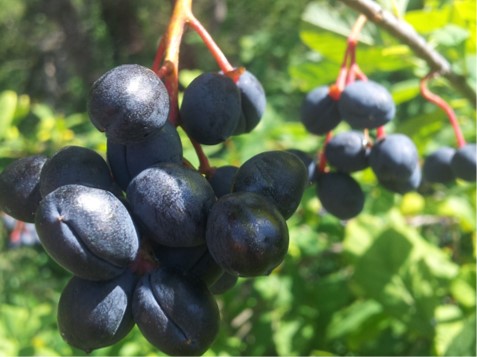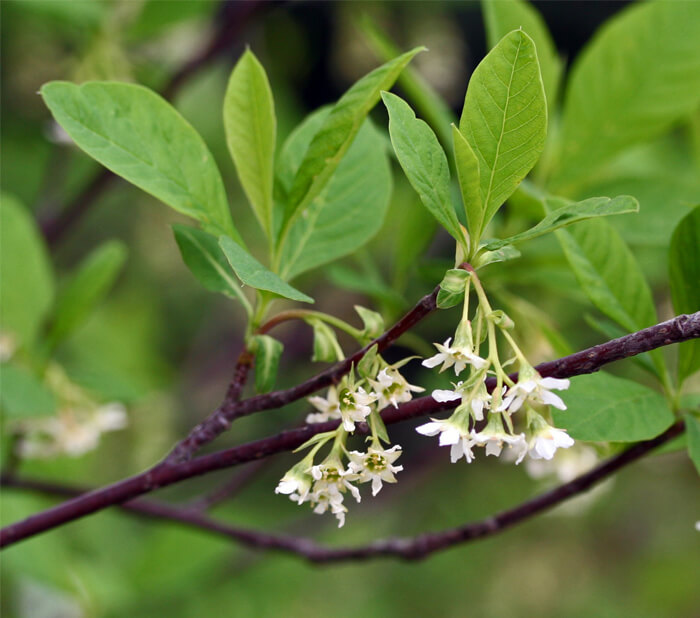Hello, I am LuAnn Staul. You may know me as Henry and Penelope’s grandma.

I want to introduce you to another native plant, the Indian Plum The Indian Plum’s scientific name is Oemleria cerasiformis and it has many common names, including the osoberry, Oregon plum, Indian peach, and bird cherry. This plant grows along the Pacific Coast of North America in British Columbia, Canada, Washington, Oregon, and Northern California.
The fruits of the Indian Plum can be eaten and look like clusters of small plums which are dark blue when ripe.
This plant is especially important to pollinators. Pollinators get food in the form of energy-rich nectar and protein-rich pollen from the flowers they visit. Birds, bats, bees, butterflies, and beetles are all pollinators. Once the pollinator has visited a flower it carries the pollen to other flowers; this makes it possible for the pollinated flowers to develop and produce seed.
Pollination is required to produce many of your favorite foods—apples, pears, cherries, and blueberries. Pollinators also support our ecosystem and natural resources by helping plants reproduce.

The Indian Plum is especially important because it is one of the first plants to leaf out and develop flowers. It develops leaves and flowers in early March before many other plants begin to flower. This provides an early source of pollen for bees and other pollinators.
The indigenous people of the Pacific Northwest included Indian Plum fruit in their diets, and they used the plant’s bark and twigs to make tea and medicine. The fruit is also eaten by small mammals like mice and voles, plus foxes, coyotes, deer, bear, and many bird species.
Indian Plum is a tall shrub growing up to 15 feet high. It has multiple trunks that grow upright. The flowers are white and whitish green. The fruit occurs in clusters and is orange and yellow when young but blue-black as it ripens. The plant grows in part to full shade in soil that is dry to moist.
Planting native plants like the Indian Plum provides food for pollinators as well as other native animals. If we all begin adding these plants to our yards, we will be on our way to develop a Homegrown National Park in our community.
LuAnn Staul

